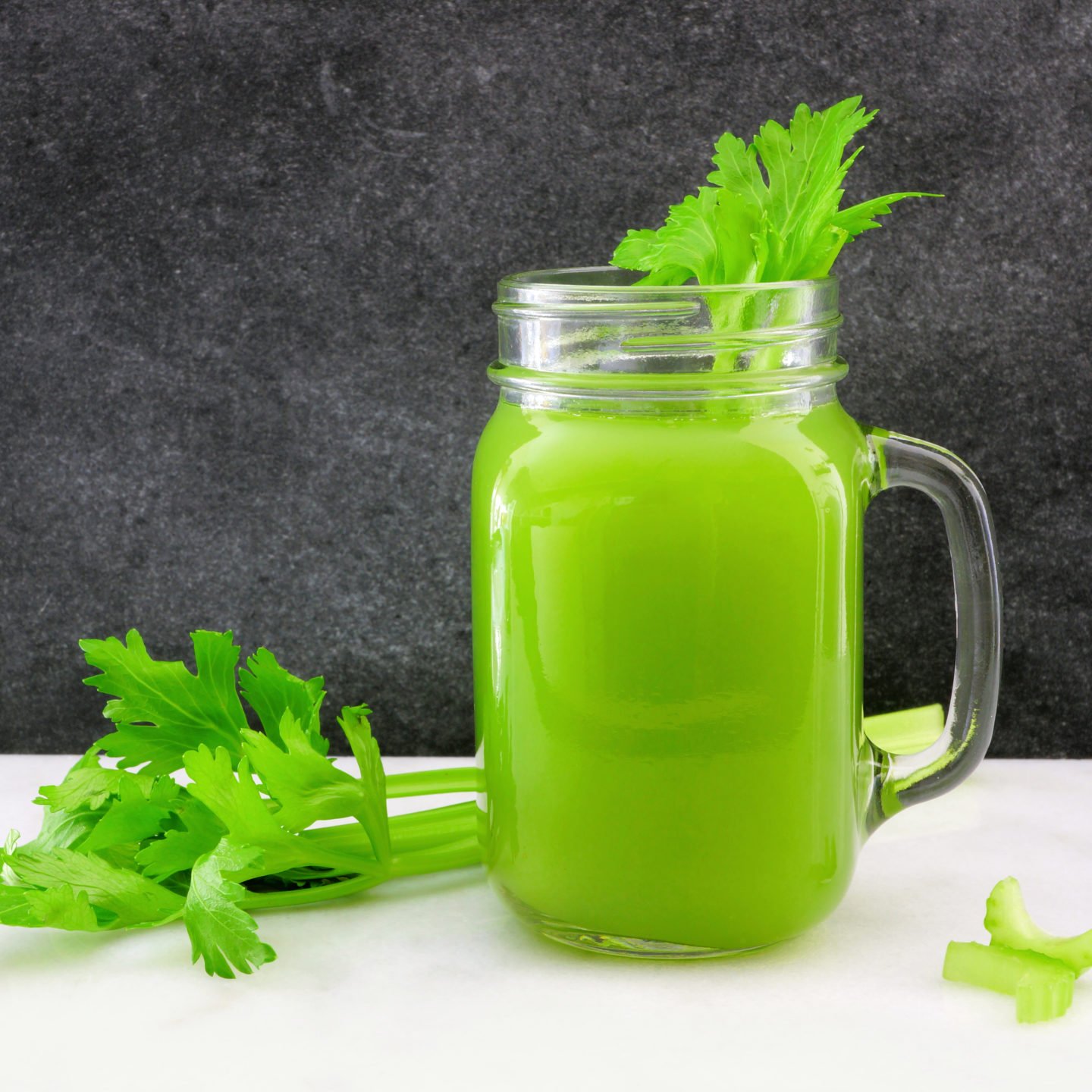Celery juice works as an antioxidant, is anti-inflammatory, aids in good digestive health, weight loss, and so much more.

However, we may not always have enough time to make fresh celery juice. For those on a daily cleansing diet, the grocery sometimes runs out of a bunch of celery. We all know drinking fresh celery juice is best, but you can also make extra celery juice and store it for later.
In the fridge, fresh celery juice will last for about 2 to 3 days and up to 6 months in the freezer. However, how long it actually lasts will depend on combined factors that you must know of. This article will teach you tips and tricks to keep your celery juice still fully packed with nutrients even when stored.
Table of Contents
The Best Time to Make Celery Juice
Homemade celery juice usually contains no preservatives. As a result, the juice does not last very long. In contrast, store-bought juice lasts longer because it goes through pasteurization, a process that aids with the removal of all bacteria from the juice.
When you make your celery juice also affects its nutritional value. Experts recommend making fresh celery juice in the morning and drinking it on an empty stomach. Doing so will allow your digestive system to absorb more nutritional content from the fresh juice.
Factors that Affect the Fresh Juice’s Shelf-life
If you plan to make your juice ahead of time, here are some important reminders for avid celery juice drinkers like you.
Oxidation
The longer fruit or vegetable juice is exposed to air, the more oxygen it absorbs. In that instance, the juice's proteins and amino acids react with the oxygen, causing it to discolor and reducing its nutritious value.
Oxidation also occurs when heat is generated by juicers or blenders and degrades the juice's contents.
Type of Juicer You Use
Juice extracted using centrifugal juicers has a shelf life of around 24 hours. These juicers have extraordinarily fast, rotating blades and extract juice in minutes. They are considerably more convenient for quick celery juicing that needs to be consumed immediately.
However, these juicers are not suitable for making celery juice to store because the fast speed causes oxidation. As a result, your celery juice will be slightly oxidized and denatured due to the heat.
On the other hand, juice made with a masticating juicer can last 72 hours. Often known as slow juicers, masticating juicers work by rotating slowly. As a result, the auger which crushes the fruits and vegetables will not heat up much, if at all. If you plan on storing your celery juice, I’d recommend getting a masticating juicer.
If you have a twin gear juicer, it will last even longer — somewhere between 4 and 5 days.
Type of Fruits and Vegetables
The juice’s shelf life is also affected by the state of the fruits and vegetables you're juicing. The fresher they are, the better, as they contain more nutrients. Organic produce also offers higher levels of nutrients; thus, it can extend the juice’s shelf life.
Type of Storage Material
You can store your celery juice in sealed glass or plastic containers. Plastic containers are a low-cost choice, but glass remains the better option. Celery juice oxidizes significantly faster in plastic bottles and may contain toxic chemicals that could affect celery juice.
For glass, you can use either a bottle or a mason jar. Mason jars have a rubberized vacuum seal, preventing your celery juice from oxidizing faster and prolonging its shelf life. You should store your celery juice in glass mason jars if you have them.
Where You Store Your Celery Juice
If you want to consume your fresh juice within the next twenty-four to seventy-two hours, it's best to keep it in the fridge.
But if you plan to keep it longer than that, you should store it in the freezer, where it can last for up to six months. Unfortunately, the longer celery juice is kept, the more it will lose its nutritional value. Therefore, it is best to store celery juice only if you use organic celery and harvest large volumes at a time. Note that one large bunch of celery stalks makes 16 oz or 2 cups of juice.
There are two ways to defrost your celery juice. First, you can remove your frozen juice and place it in the fridge for about 24 hours. Or, you can also thaw your celery juice in the sink for 10 to 15 minutes. If the ice is still present, you can melt it by pouring boiling water down the container.
Consume your celery juice after it has defrosted; don't refreeze it because the quality of nutrients has already been significantly reduced.
Juice Gone Bad
Improper storage may cause your fresh juice to go bad quicker. When celery juice gets bad, it starts to turn darker. However, this does not mean it should be thrown away unless there are other indicators of spoiling.
If you notice bubbles floating on the surface of the juice, it may indicate spoilage. Bacteria have already acted upon the juice, so you should discard it. An unpleasant smell is another sure sign that the celery juice is spoiled. It will usually have a strong sour odor.
Mold will grow when the juice is left at room temperature for several hours. Fungi and bacteria flourish in warm environments, which encourages mold growth. When you find mold on celery juice, immediately discard it.
Fresh celery juice has a semi-sweet flavor to it. Once your celery juice tastes sour, you’ll immediately know that it has gone bad. Immediately spit it out and discard the rest.
Harmful Effects of Spoiled Juice
Sometimes, the juice may look okay even after more than 72 hours. However, it is always better to throw it away to protect your health.
After 72 hours, there's a good possibility that bacteria may act upon the juice and cause food poisoning. This may cause an upset stomach, diarrhea, and vomiting. Furthermore, most of the nutrients in celery juice have already been lost. You'll merely be drinking tasteless and unhealthy juice.
Tips to Keep Celery Juice Fresh
As homemade juice goes bad quickly after only a couple of hours, you should consume it within 20 minutes of making them.
But if you can’t, here are some tips to keep celery juice fresh:
- Keep the juice in an air-sealed container right after it's made to preserve the juice's flavor at room temperature. Fill the jar to the top to avoid exposing your juice to the air, which could spoil it.
- Keep it in the fridge in an airtight container to prolong its shelf-life. A mason jar is the best way to accomplish this.
- Add lime, orange, or lemon juice to keep it fresher if you want to. Many citrus fruits contain vitamin C or ascorbic acid, a natural preservative.
If you plan to keep the juice for more than three days, a freezer will come in handy. In this situation, make sure the juice is placed in a freezer-safe airtight container with a small amount of space at the top before freezing it. Remember not to fill it to the brim because the juice will expand once frozen.
Of course, keep in mind that freezing celery juice will reduce the nutrients and flavor over time.
Alternatively, some recommend keeping some celery fiber in your juice as it helps slow down the oxidation process.
How Much to Consume at a Time
Celery juice is also known for its ability to combat chronic illnesses. The Medical Medium advocates using celery juice as part of a detoxification program to cleanse the body.
Experts say that drinking 16 oz of straight celery juice daily is ideal. However, a person suffering from chronic illness or symptoms can benefit significantly from increasing their intake to 24 to 32 ounces per day.

Leave a Reply